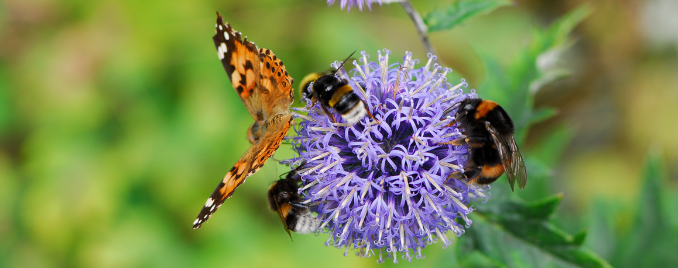The importance of learning from the grandiose textbook of nature can never be overstated. For centuries, humanity has looked towards its vast wisdom for innovative solutions. This approach of seeking inspiration from nature to solve human challenges is known as biomimicry. Today, let’s delve into the power of biomimicry and how it can dramatically enhance our agricultural practices.
Historically, nature has been our original mentor. In our quest to grow and advance, we’ve learnt to make fire, create tools, and build shelters from observing the natural world. With the advent of modern science, this observance has intensified, and biomimicry has become a systematic approach to innovation.
In the sphere of agriculture, biomimicry can revolutionize how we grow and sustain our food systems. Given the stress that traditional farming practices place on our environment, there’s an urgent need to adopt more sustainable, nature-inspired strategies.
Recreating Biodiversity for Efficient Pollinators
To start with, consider the amazing efficiency of pollinators like bees and butterflies. These tiny creatures play a critical role in food production, pollinating nearly 75% of the world’s crops. Yet, modern farming practices, with their reliance on monocultures and pesticides, have contributed to a worrying decline in these essential pollinators.
Instead of replacing natural pollinators with technology, biomimicry offers a solution through biodiversity enhancement. To attract and support pollinators, we need to create environments that cater to their needs. This means growing a diverse range of flowering plants that bloom at different times of the year, providing a continuous source of nectar and pollen.
Farmers are starting to adopt this method, developing ‘pollinator gardens’ or dedicating sections of their farms to wildflowers. In addition to this, establishing hedgerows and windbreaks with native flowering shrubs and trees not only offers food sources but also necessary habitats and protection for these beneficial insects.
These efforts do not only benefit the pollinators, but also the crops. A diversified farm with thriving populations of natural pollinators ensures an efficient pollination process and contributes to increased crop yield and quality. Instead of causing further strain on pollinator populations, this strategy focuses on coexistence, ensuring that we restore and maintain the delicate balance of nature while securing our food sources.
This approach goes hand in hand with other sustainable farming practices such as minimizing pesticide use, which will directly reduce harm to these beneficial insects. By creating a conducive environment for natural pollinators, we can revive their populations and restore their crucial role in our food systems. Thus, biomimicry, through the promotion of biodiversity, provides a resilient solution for our pollination challenges.
Learning from the Soil’s Natural Ecosystem
Next, let’s consider the soil’s natural ecosystem. A healthy soil teems with life, from microorganisms to worms, all contributing to a rich soil structure, fostering plant health, and cycling nutrients. Regenerative agriculture, inspired by the soil’s natural ecosystems, encourages the growth of this complex web of life.
This technique discourages tilling, which disrupts soil structure, and encourages cover cropping and crop rotation, which increase organic matter and biodiversity in the soil. The result is a rich, self-sustaining system that resists pests and diseases, reduces the need for artificial fertilizers and pesticides, and captures more carbon from the atmosphere.
Water Conservation the Biomimicry Way
Moreover, biomimicry can also inspire innovative approaches to water conservation. In regions with scarce water resources, farmers are learning from the Namib Desert beetle. This ingenious creature collects water from early morning fogs, by condensing the moisture on its uniquely structured back and channeling it into its mouth. Inspired by this, scientists have created self-irrigating fields with similar structures that collect and channel dew and fog, drastically reducing water usage.
Mimicking Natural Pest Control
Finally, nature has its own systems of pest control. Certain plants release chemicals that repel pests, while others attract beneficial insects that prey on harmful pests. By studying these relationships, farmers can design ‘polycultures’ or diverse plantings that naturally reduce pest numbers, reducing reliance on harmful chemical pesticides.
The future of agriculture lies not in fighting nature, but in aligning with it. Biomimicry invites us to look at the natural world with new eyes, to recognize the genius of its designs, and to learn from its billions of years.








